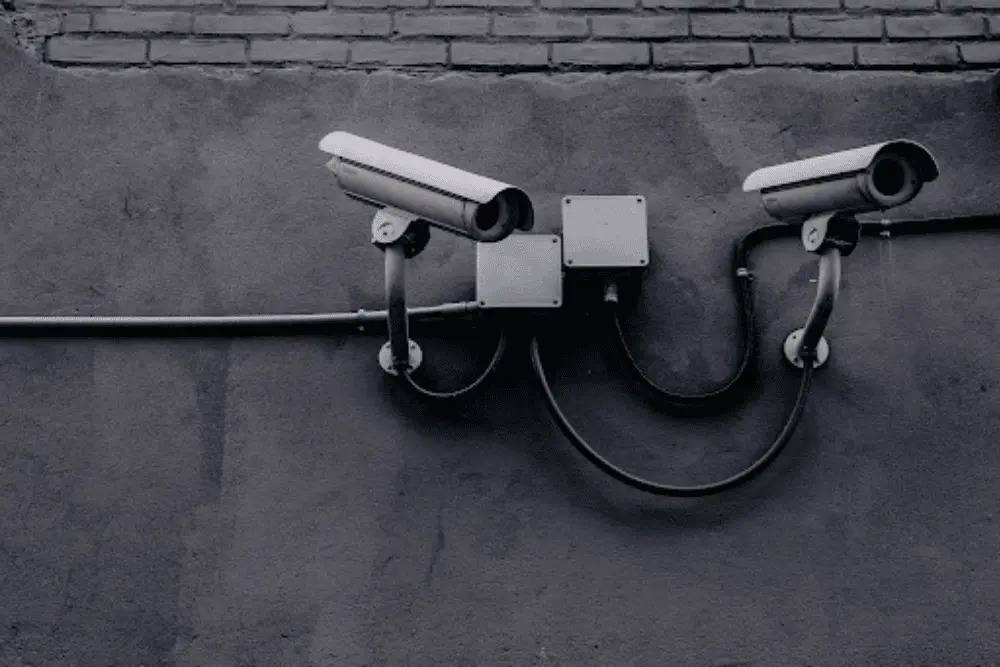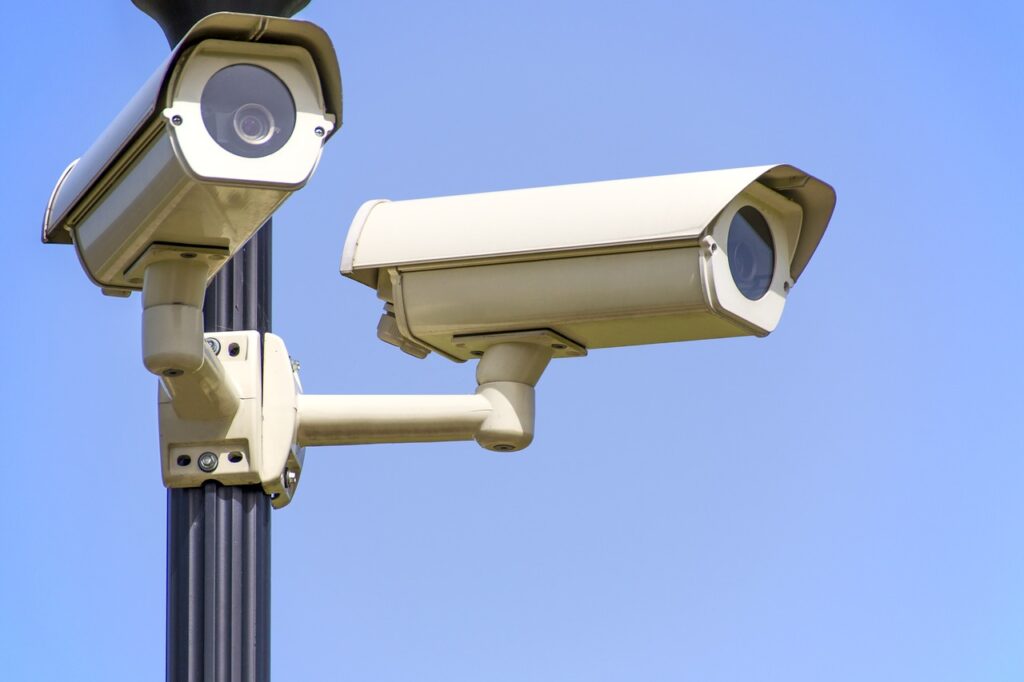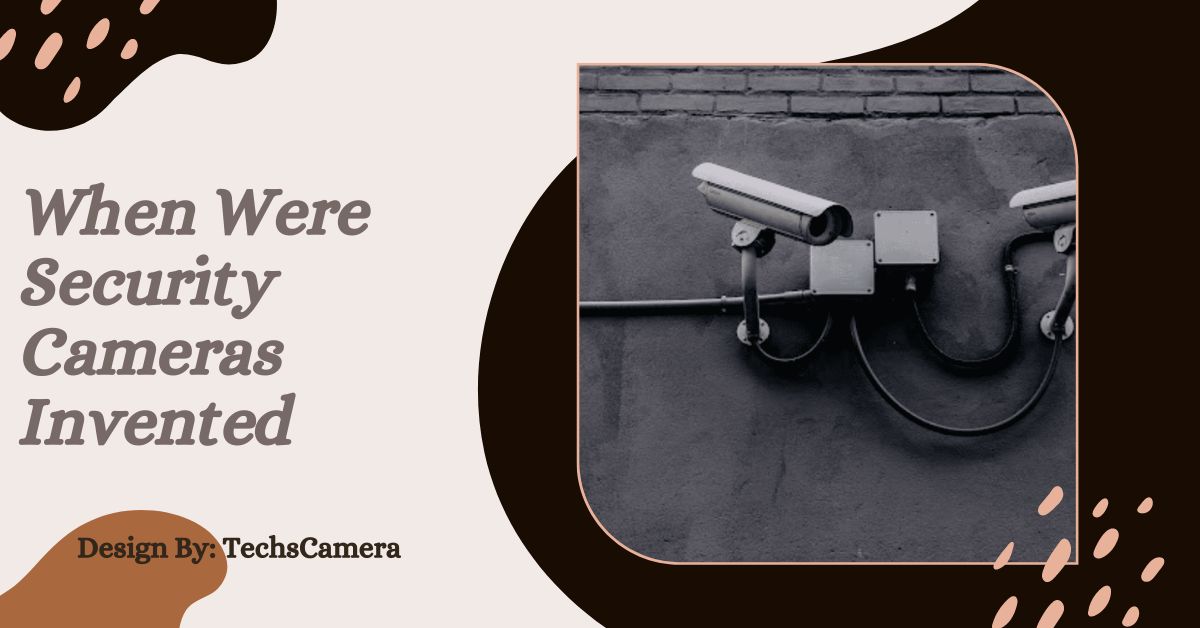When Were Security Cameras Invented – A Journey Through Time!
Security cameras began in the 1940s with early systems designed for military use. Over the decades, technology evolved from analog to digital, and today features high-definition imaging and AI-powered analytics.
Security cameras are now a vital part of keeping our homes, businesses, and public areas safe. They help us monitor what’s happening and provide evidence when needed. To understand how we got to today’s advanced systems, let’s look at the history of security cameras, their development milestones, and what the future holds.
When Was the First Security Camera Invented?
The journey of security cameras began in the early 20th century. The first real security camera was created in the 1940s. This early model was designed to help monitor specific areas and events. The technology evolved over time, leading to the sophisticated systems we use today.
The First Surveillance System:

The first practical surveillance system was developed during World War II by German engineer Walter Bruch. He created a system to monitor V-2 rocket launches. This early system used what we now call Closed-Circuit Television (CCTV). It was a groundbreaking step in surveillance technology.
The First Security Camera:
The first security camera is often credited to American inventor Louis H. Bauer, who made a significant contribution in 1949. His camera was designed for surveillance and became one of the first devices used in security applications.
When Did Security Cameras Get Invented?
1920s
In the 1920s, the idea of electronic surveillance was just beginning. Although there were no commercial security cameras at this time, the development of electronic technology laid the groundwork for future advancements in surveillance.
1940s
The 1940s were pivotal for the development of security cameras. The introduction of CCTV systems during World War II marked the start of practical surveillance technology. These systems were used for specific purposes, such as monitoring rocket launches, but they demonstrated the potential of electronic surveillance.
1960s
By the 1960s, the technology had advanced enough to create early CCTV systems for commercial and public use. These systems were still analog but began to be used more widely in security applications. They represented a significant step forward in the evolution of security technology.
1990s
The 1990s brought a major transformation with the introduction of digital technology. The development of Digital Video Recorders (DVRs) allowed for better recording and storage of video footage. This era marked the shift from analog to digital systems, enhancing the quality and accessibility of surveillance.
Also Read: Ring Camera Unsupported Contect Error – A Detailed Guide!
2000s
The 2000s saw the emergence of IP (Internet Protocol) cameras. These cameras could be connected to networks, allowing for remote monitoring and easier integration with digital systems. This period also saw improvements in image resolution and recording capabilities, making surveillance systems more effective.
2010s
In the 2010s, security cameras became even more advanced with the introduction of high-definition (HD) cameras. These cameras offered better image quality and new features, such as motion detection and remote access via smartphones. Cloud storage also became popular, making it easier to store and access surveillance footage.
Milestones in Security Camera Development:
The First CCTV Systems
The earliest CCTV systems were developed in the 1940s. These systems used analog technology and were primarily used for specific surveillance tasks, such as monitoring military activities. They represented the beginning of modern security surveillance.
Analog Systems
For many years, analog systems were the standard for security cameras. They recorded footage onto VHS tapes and were widely used in both residential and commercial settings. While effective, analog systems had limitations in terms of image quality and storage capacity.
Black and White to Color Transition
In the 1970s and 1980s, security cameras transitioned from black-and-white to color. This change significantly improved the quality of surveillance footage, making it easier to identify details and individuals. Color cameras became the new standard for security systems.
The Introduction of Digital Technology
The 1990s marked a significant shift with the introduction of digital technology. Digital Video Recorders (DVRs) replaced VHS tapes, allowing for better storage and management of video footage. This advancement made it easier to search and retrieve recorded video, enhancing the functionality of security cameras.
The Impact of Security Cameras:

Crime Prevention
One of the biggest benefits of security cameras is their role in preventing crime. The presence of cameras can deter potential criminals, as they know they are being watched. This has been shown to reduce crime rates in many areas.
Privacy and Ethical Considerations
While security cameras are effective, they also raise concerns about privacy. People worry about being constantly monitored, and there are ethical questions about how footage is used. It’s important to balance security with respect for individual privacy.
Future Trends of Security Cameras:
AI-Powered Video Analytics
Artificial Intelligence (AI) is revolutionizing security cameras with advanced video analytics. AI can analyze video footage in real-time to detect suspicious activities or recognize faces. This technology helps improve the accuracy of surveillance and reduces the need for constant human monitoring.
IoT Integration
The Internet of Things (IoT) is connecting security cameras to other smart devices. This integration allows for more sophisticated monitoring and control. For example, IoT-enabled cameras can work with smart alarms and lighting systems to enhance overall security.
Cloud-Based Storage
Cloud-based storage solutions are becoming increasingly popular. They allow users to store and access video footage online, rather than on physical devices. This makes it easier to manage and back up surveillance data, and users can access their footage from anywhere.
High-Resolution Imaging Technology
High-resolution cameras, including 4K and higher, provide clearer and more detailed images. This technology improves the quality of surveillance footage, making it easier to see and identify important details. As resolution technology advances, security cameras will continue to offer better image quality.
FAQ’s:
1. When was the first security camera invented?
The first security camera was invented in the 1940s, with early models designed for military and surveillance purposes, evolving into more advanced systems over time.
2. What was the first practical surveillance system?
The first practical surveillance system, developed in the 1940s by Walter Bruch, was used to monitor V-2 rocket launches during World War II and introduced CCTV technology.
3. How did security cameras evolve in the 1990s?
The 1990s saw the transition from analog to digital technology, introducing Digital Video Recorders (DVRs) for better video quality and easier footage management.
4. What advancements occurred in the 2000s?
The 2000s introduced IP cameras, enabling remote monitoring and integration with networks, along with improvements in image resolution and recording capabilities.
5. What are current trends in security cameras?
Current trends include AI-powered video analytics for real-time monitoring, IoT integration for smart device connectivity, cloud-based storage for easy data access, and high-resolution imaging technology.
Conclusion
Security cameras have significantly evolved since their inception in the 1940s. From early analog systems to today’s high-definition, AI-enhanced models, advancements have greatly improved surveillance capabilities. Future developments promise even more sophisticated features, ensuring that security cameras continue to play a crucial role in crime prevention and safety.



